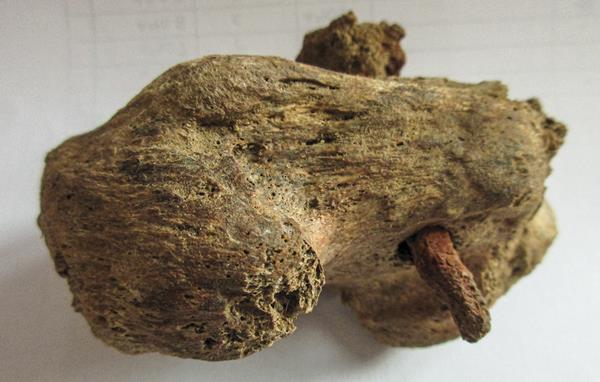
A recent surprise discovery has shed light on the gruesome execution practice of Roman crucifixion. A team excavating several graves at a site near Fenstanton in southeastern England came across the remains of a local man, likely in his late 20s, executed by crucifixion during the second century C.E. Despite crucifixion being a relatively common method of Roman execution, this is only the fourth time an archaeological find has provided direct evidence of the practice. This is in part because crucifixion victims—often criminals—rarely received a standard burial.
Similar to the previously discovered examples, including the remains of a crucified individual found in a first-century tomb in Jerusalem in 1968, the Fenstanton burial preserves evidence of a nail that pierced one of the individual’s heel bones during crucifixion. In contrast to how crucifixion is often depicted in Christian iconography, the feet of the victim would not have been nailed together on the front of the cross—but rather to either side of the cross. This was to prevent victims from being able to lift themselves with their feet. Two more nails would have likely been drilled into the hands of the victim, as indicated in the Gospel of Luke (Luke 24:39).
Already a library member? Log in here.
Institution user? Log in with your IP address.

